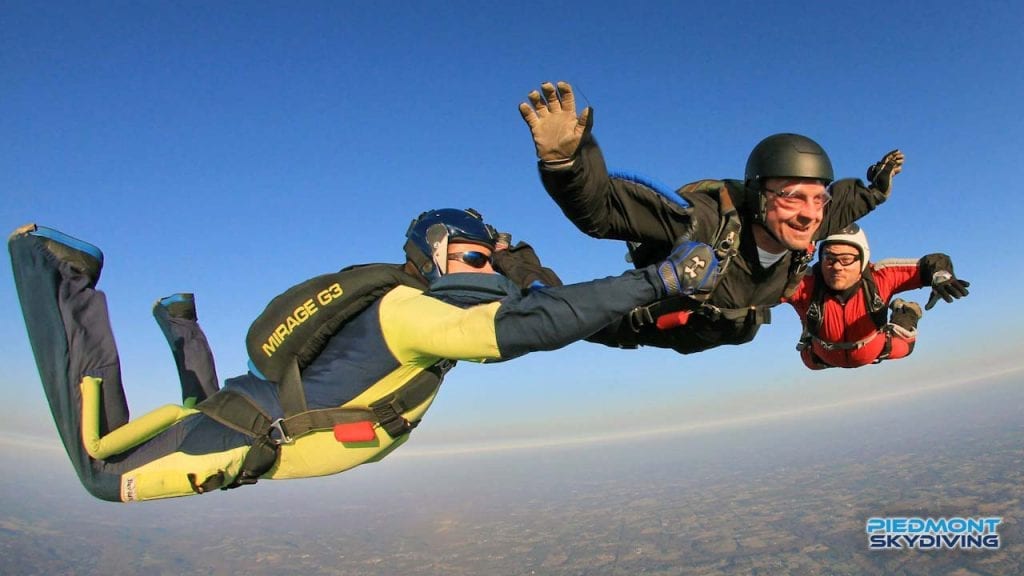Skydiving is an exhilarating adventure that pushes the limits of the human experience and, of course, comes with an inherent level of risk. To keep safety at the forefront, skydivers actively minimize these risks through a strong culture of safety, a disciplined mindset, and cutting-edge technological advancements. Enter: The Automatic Activation Device (AAD)!
What Is An Automatic Activation Device?
What’s an AAD, and what is the purpose of the Automatic Activation Device? An AAD is a compact electronic device that lives inside the parachute container. Its primary purpose is to assist in deploying the reserve parachute in the event that the skydiver is unable to do so manually. There are a few reasons why someone may experience their AAD firing:
Loss of Consciousness. If a skydiver loses consciousness or experiences a medical emergency, the AAD acts as a backup.
Disorientation. Skydiving can be a high-stress situation. If a skydiver becomes disoriented or unaware, panic may prevent timely deployment of the main parachute, causing the AAD to fire. Situations like these are extremely rare, but we like to be prepared for anything and everything!
Equipment Malfunction. Like we said, we like to be prepared for anything. Should a skydiver have to cut their main parachute away due to a malfunction and doesn’t have enough time to deploy the reserve, the AAD fires and deploys it automatically.
Distraction. Although very unusual, it’s possible for a skydiver to simply forget to deploy their main parachute! We know how crazy that sounds, but people are humans and we all make mistakes. Distraction can be detrimental, and we’re thankful for AADs as a last resort.
You can think of an AAD to a skydiving rig like an airbag to a car. If you’re soaring down the highway and a totally unexpected obstacle emerges, giving you no time to appropriately react, the vehicle sensors will tell the airbag to deploy in order to protect you. Airbags are there as a ‘just in case’ safety measure, just like AADs in skydiving.
During a skydive, if a jumper is disoriented or unconscious, the AAD is designed to sense this and deploy the reserve parachute to protect the jumper. The AAD (or the airbag) doesn’t replace the jumper’s training or the driver’s experience, but it provides critical protection in the event of an emergency.
Just like an airbag is required in modern vehicles, the United States Parachutes Association (USPA) requires that tandem skydiving rigs are equipped with an AAD. You may not see it, but it’s there, nestled within the skydiving rig.

How Does An AAD Work In Skydiving?
What is an AAD in skydiving based on? Air pressure and speed! There are three main components of the Automatic Activation Device skydiving tool: the control unit, processing unit, and cutting tool.
The control unit. The control unit is the part of the AAD that the skydiver can see. It comes equipped with a button that can be clicked to turn the device on. Why does an AAD need to be on before any skydive? Because, in skydiving, we expect the best and prepare for the unexpected – meaning, although much of a skydive is controllable, there are variables that can come up that we need to be prepared to take control of.
During a gear check, it is common for a jumper to be asked, “Did you turn on your AAD here and today?” The time and geographic implication is important – AADs time out and turn off after some time, and they “zero” at the ground altitude. Meaning, if you turned on your AAD at your house and then drove to the dropzone, the altitude at your house may not be the same as the dropzone where you’re jumping. For your AAD to save your life, it needs to calculate how high you actually are.
The processing unit. The processing unit constantly monitors altitude and descent speed using barometric pressure sensors. If the skydiver descends too rapidly at a dangerously low altitude – indicating that they don’t have a parachute above them when they very well should – the processing unit tells the cutter unit to do its thing.
The cutter unit. Parachutes and sharp objects don’t usually live in close proximity – but the AAD is a skydiving must-have! It is used to cut the reserve ripcord and initiate deployment if the processing unit tells it to. The cutter unit is the star of the show!
How Much Does An AAD Cost?
The skydiving AAD is worth its weight in gold! An AAD actually costs around $1,000, an investment that comes with priceless peace of mind. AADs save lives!
Can’t stop thinking about jumping out of a perfectly good airplane? Book today! Our staff is happy to answer any questions you may have about the gear we use or the experience we have. We can’t wait to have you! Blue skies!






